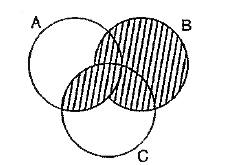If , then the illustration of in a Venn diagram is
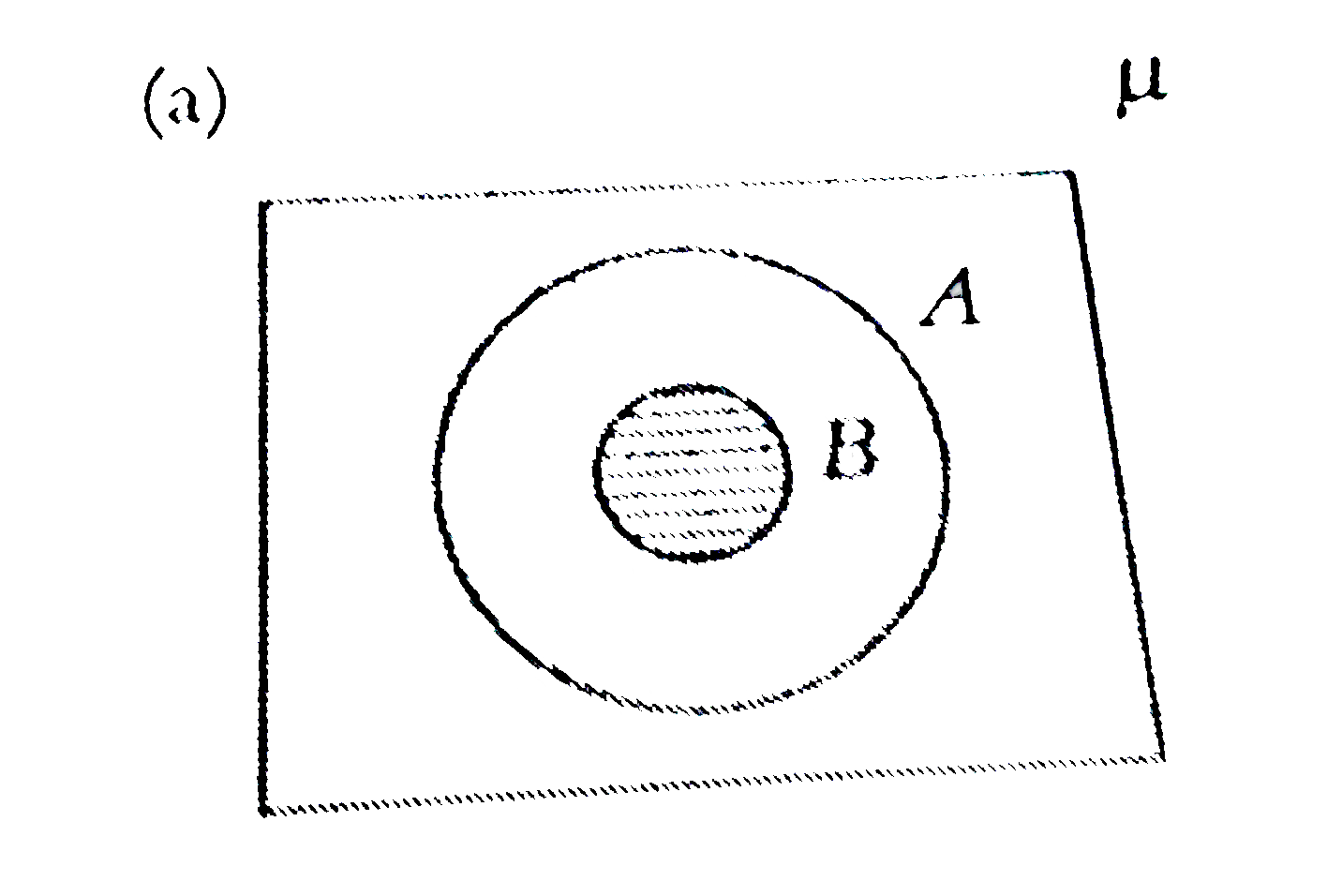
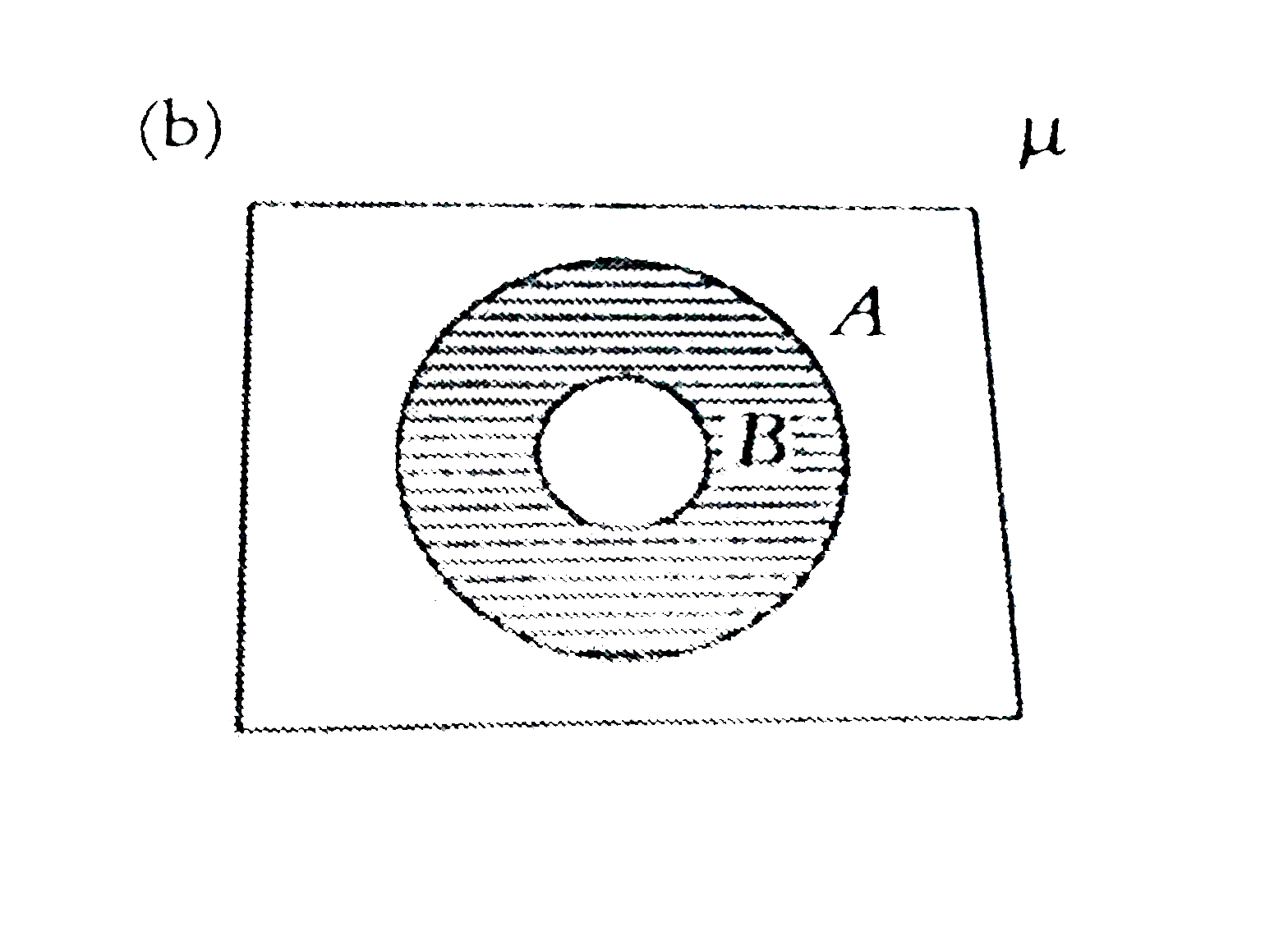

None of these
The correct Answer is:B
To solve the problem of illustrating A−B in a Venn diagram when A is a subset of B, we can follow these steps:
1. Understanding the Terms:
- First, we need to understand what it means for A to be a subset of B. This means that every element in set A is also an element of set B.
2. Defining the Sets:
- Let's denote the universal set as U.
- Set B will contain all the elements of set A and possibly more elements.
3. Drawing the Venn Diagram:
- Draw a rectangle to represent the universal set U.
- Inside this rectangle, draw a circle for set B.
- Inside the circle for B, draw another circle for set A such that the entire circle of A is within the circle of B.
4. Identifying A−B:
- The operation A−B represents the elements that are in A but not in B.
- Since A is a subset of B, there are no elements in A that are not in B.
5. Conclusion:
- Therefore, A−B is an empty set, denoted as ∅ or ϕ.
- In the Venn diagram, this means that there is no shaded area representing A−B because there are no elements to illustrate.
6. Final Answer:
- The illustration of A−B in a Venn diagram is an empty area, indicating that A−B=∅.
- First, we need to understand what it means for A to be a subset of B. This means that every element in set A is also an element of set B.
- Let's denote the universal set as U.
- Set B will contain all the elements of set A and possibly more elements.
- Draw a rectangle to represent the universal set U.
- Inside this rectangle, draw a circle for set B.
- Inside the circle for B, draw another circle for set A such that the entire circle of A is within the circle of B.
- The operation A−B represents the elements that are in A but not in B.
- Since A is a subset of B, there are no elements in A that are not in B.
- Therefore, A−B is an empty set, denoted as ∅ or ϕ.
- In the Venn diagram, this means that there is no shaded area representing A−B because there are no elements to illustrate.
- The illustration of A−B in a Venn diagram is an empty area, indicating that A−B=∅.
Topper's Solved these Questions
- BOOK - PEARSON IIT JEE FOUNDATIONCHAPTER - SETSEXERCISE - Level 221videos
SETS
- BOOK - PEARSON IIT JEE FOUNDATIONCHAPTER - SETSEXERCISE - Level 38videos
SETS
- BOOK - PEARSON IIT JEE FOUNDATIONCHAPTER - SETSEXERCISE - Essay Type Qns5videos
SETS
- BOOK - PEARSON IIT JEE FOUNDATIONCHAPTER - REAL NUMBERS AND LCM AND HCF EXERCISE - level -111videos
REAL NUMBERS AND LCM AND HCF
- BOOK - PEARSON IIT JEE FOUNDATIONCHAPTER - SIMPLE INTEREST AND COMPOUND INTEREST EXERCISE - CONCEPT APPLICATION Level 39videos
SIMPLE INTEREST AND COMPOUND INTEREST
Similar Questions
Knowledge Check
- Question 1 - Select One
If A⊂B, then the illustration of A−B in a Venn diagram is
A B
B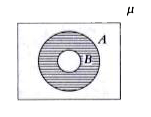 C
C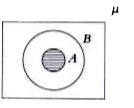 D
D
- Question 2 - Select One
If A and B are disjoint then the illusations of A−B in a Venn diagram is
A B
B C
C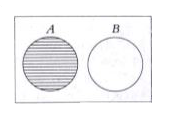 D
D
- Question 3 - Select One
If A and B are disjoint then the illusations of A−B in a Venn diagram is
A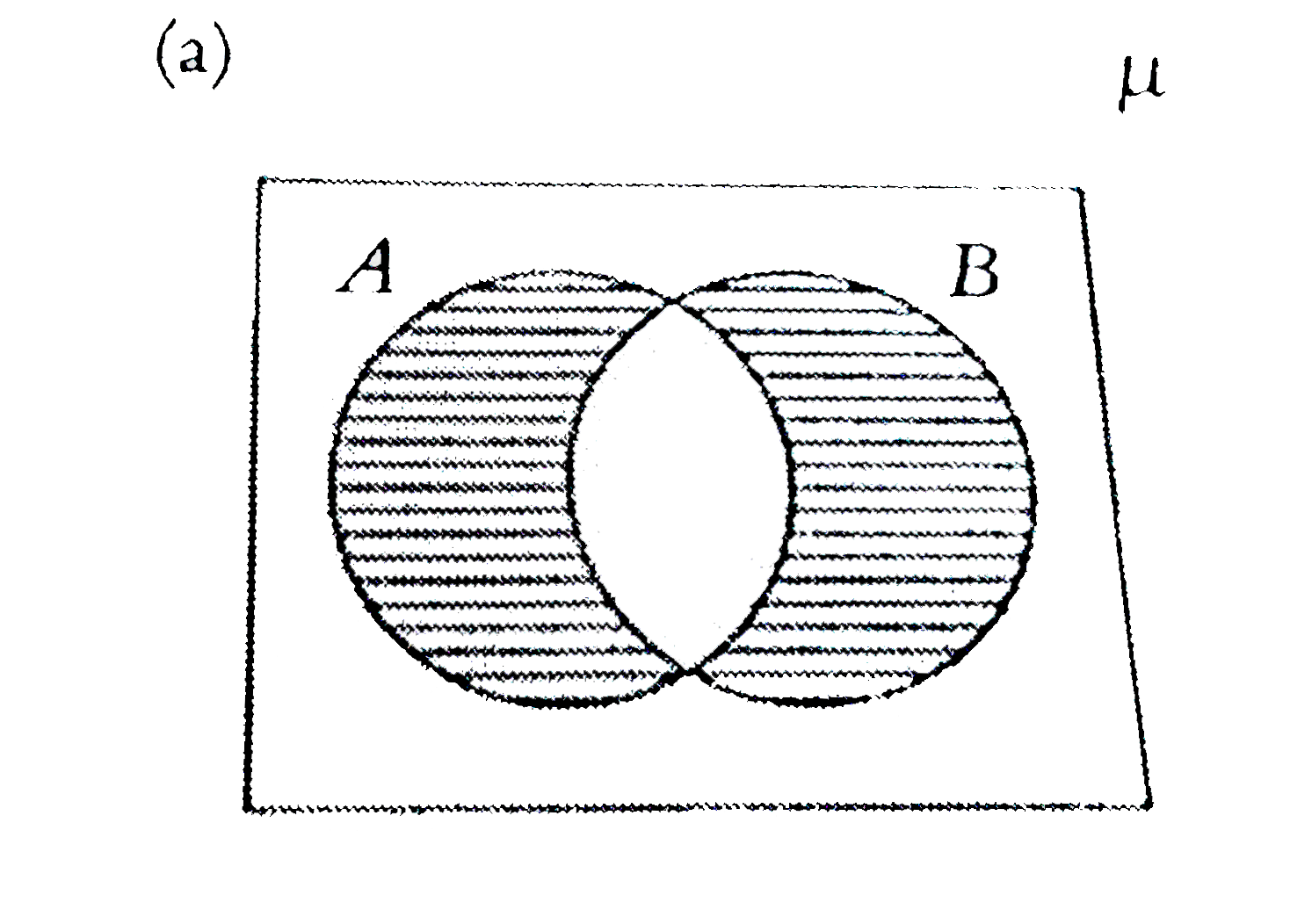 B
B C
C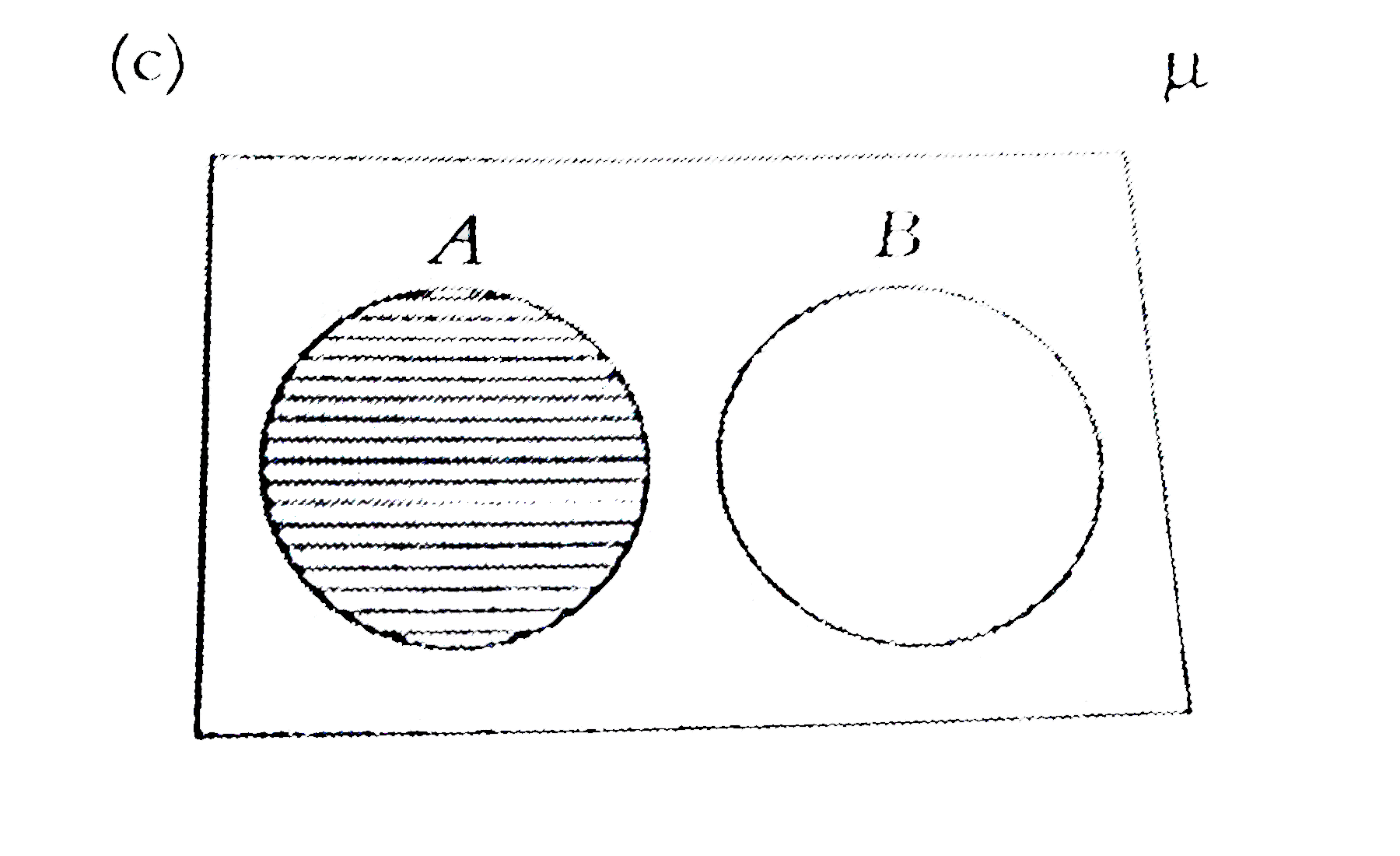 D
D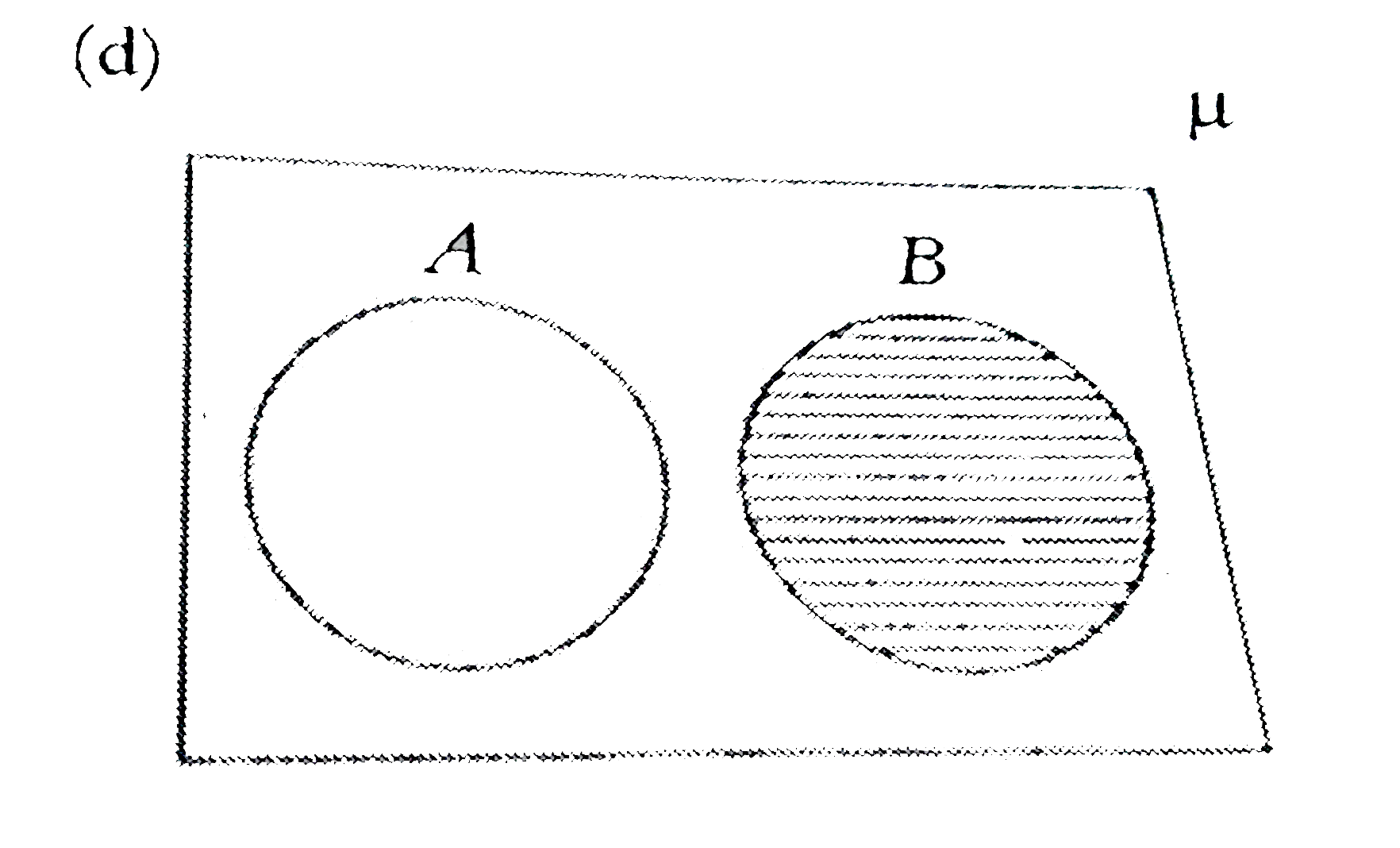
Let A⊂B⊂U. Exhibit it in a Venn diagram.
View SolutionIn the following question, choose the Venn diagram, which best illustrates the three given classes

Truck, goods, shipView SolutionIf A={2,4,6} and B={1,2,3,4,5} , then show A∪B by using Venn diagram.
View SolutionConsider the following Venn diagram

If |E|=42, |A|=15, |B|=12 and |A∪B|=22, then the area represented by shaded portion in the above Venn diagram isView SolutionWhich of the following Venn diagram represent (A−B)?
View Solution


